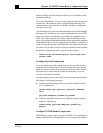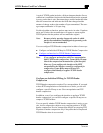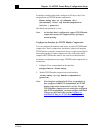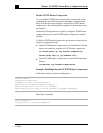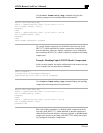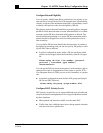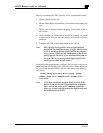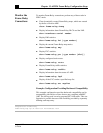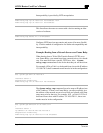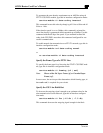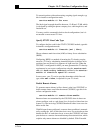
AI2524 Router Card User’s Manual
Page 13-46 August 1997
2524UM
Before you configure the DLCI priority levels, complete these tasks:
1. Define a global priority list.
2. Enable Frame Relay encapsulation, as described earlier in this sec-
tion.
3. Define static or dynamic address mapping, as described earlier in
this section.
4. Make sure that you define each of the DLCIs to which you intend
to apply levels. You can associate priority-level DLCIs with sub-
interfaces.
5. Configure the LMI, as described earlier in this section.
Note: DLCI priority levels provide a way to define multiple
parallel DLCIs for different types of traffic. DLCI priority
levels do not assign priority queues within the router or
access server; in fact, they are independent of the device's
priority queues. However, if you enable queuing and use
the same DLCIs for queuing, then high-priority DLCIs
can be put into high-priority queues.
In interface configuration mode, configure DLCI priority levels by en-
abling multiple parallel DLCIs for different types of Frame Relay traf-
fic, associating specified DLCIs with the same group, and defining
their levels:
frame-relay priority-dlci-group
group-
number high-dlci medium-dlci normal-dlci
low-dlci
Note: If you do not explicitly specify a DLCI for each of the
priority levels, the last DLCI specified in the command
line is used as the value of the remaining arguments.
However, you must provide at least the high-priority and
the medium-priority DLCIs.




